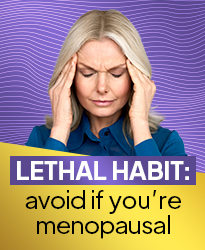When it comes to solving the Rubik’s cube of our emotions, modern medicine has often been more “trial and error” than “Eureka!” However, a new contender has entered the chat: psychedelics. Yes, those colorful, trippy substances that your hippie uncle might rave about are now under serious scientific scrutiny. Let’s dive into the fascinating world of psychedelics in mental health and see if we can separate the groovy myths from the scientific facts.
The Science of Psychedelics in Mental Health
First, let’s clear the air. Psychedelics like psilocybin (the magic in magic mushrooms), LSD, and MDMA aren’t just about hallucinating a conversation with your houseplant. They’re showing promise in treating conditions such as depression, PTSD, and anxiety. It turns out these substances can help people access parts of their psyche that traditional therapies struggle to reach—like finding a secret door in an escape room you didn’t even know existed.
But how does it work? Psychedelics interact with serotonin receptors in the brain, particularly the 5-HT2A receptor. Think of it as opening up the brain’s software for a much-needed update—rebooting systems, rerouting neural pathways, and defragging old trauma. It’s not magic, but it’s pretty close.
History Repeats Itself: From Ancient Rituals to Modern Clinics
Humans have been using psychedelics for thousands of years, mostly in shamanic and spiritual practices. Ancient cultures treated these substances as sacred tools for healing and connection. Fast-forward to the 1950s and 60s, and psychedelics took a brief detour into the world of psychiatry—before being hijacked by the counterculture movement and promptly banned.
Today, psychedelics are enjoying a scientific renaissance. Researchers are revisiting these substances with the clinical rigor they deserve. It’s like rediscovering your grandma’s secret pie recipe, only to realize it’s Michelin-star worthy.
Why the Revival?
The resurgence of interest in psychedelics in mental health isn’t just because someone found an old tie-dye shirt. The global mental health crisis has left many people seeking alternatives to traditional treatments. SSRIs and talk therapy work for some, but for others, it’s like putting a Band-Aid on a bullet wound. Psychedelics offer a potential breakthrough—a chance to heal at a deeper level.
Join Our Mailing List
Register now to get our hints and tips newsletter directly to your inbox
How Psychedelics Are Changing the Mental Health Landscape
The Big Players: Psilocybin, MDMA, and LSD
Each psychedelic has its own personality (if substances could have personalities). Psilocybin is the introspective philosopher, MDMA is the warm-hearted hugger, and LSD is the mind-expanding visionary. Clinical trials have shown that psilocybin can significantly reduce symptoms of depression, often after just one or two sessions. Meanwhile, MDMA has shown ground-breaking results in treating PTSD, earning it the nickname “empathy in a pill.”
The Therapy Component
It’s important to note that psychedelics aren’t a cure-all. Their effectiveness lies in the combination of the substance and a therapeutic setting. A trained guide helps navigate the mental terrain, acting as a GPS for your inner journey. Without this, it’s easy to get lost—and nobody wants to be stuck in an emotional Bermuda Triangle.
The Risks and Controversies
Let’s not get too starry-eyed. Psychedelics aren’t without risks. Bad trips, misuse, and the potential for triggering latent mental health conditions are all valid concerns. That’s why these substances should always be used under professional supervision—not during a backyard bonfire with Chad, who swears he’s “basically a shaman.”
The Legal Landscape
The legal status of psychedelics in mental health varies globally. While places like Oregon and Colorado are leading the charge in decriminalization and therapeutic use, many countries still classify psychedelics as illegal. The tide is turning, but it’s moving slower than a snail on a yoga retreat.
Real-Life Transformations
Stories from the Front Lines
The stories coming out of clinical trials are nothing short of awe-inspiring. Veterans with severe PTSD, individuals battling treatment-resistant depression, and people facing end-of-life anxiety have found relief they never thought possible. One participant described it as “ten years of therapy in one afternoon.” Now, that’s what I call efficient!
Breaking the Stigma
One of the biggest challenges is changing public perception. Psychedelics have long been painted as dangerous party drugs, but the narrative is shifting. As more people share their transformative experiences, the stigma is being replaced with curiosity and cautious optimism.
The Future of Psychedelics in Mental Health
Big Pharma Meets Mother Nature
Pharmaceutical companies are now investing heavily in psychedelics research, hoping to develop new medications. This partnership between cutting-edge science and ancient wisdom could revolutionize mental health care. Imagine a future where your pharmacist offers you a psilocybin-assisted therapy option alongside traditional antidepressants. However, this partnership isn’t without its challenges. Accessibility and affordability remain significant hurdles. After all, we don’t want a situation where the healing power of psychedelics is reserved for the elite. The democratization of these treatments will require careful policy planning, advocacy, and perhaps even some philanthropic interventions.
Moreover, the blending of natural compounds and synthetic innovation opens up the possibility of customized treatments. Scientists are exploring whether specific formulations of psychedelics can target individual conditions more effectively. It’s an exciting time, but it also raises ethical questions about intellectual property. Who owns a molecule that’s been part of human history for millennia? As Big Pharma delves deeper, balancing profit motives with public benefit will be crucial.
What’s Next?
The next decade could redefine the mental health landscape entirely. As clinical trials expand and data becomes more robust, psychedelics might transition from being a fringe alternative to a mainstream option. Picture this: wellness centres offering psilocybin retreats approved by medical boards, or PTSD clinics incorporating MDMA therapy as a standard practice. Of course, integrating these treatments into the healthcare system will take time and effort.
Public education will play a pivotal role in this transition. Dispelling myths and fostering understanding will ensure that psychedelics are seen as serious therapeutic tools rather than recreational escape hatches. Policymakers, too, will have to adapt, crafting legislation that balances safety with innovation. We may even see collaborations between governments and private enterprises to fund further research and establish regulatory frameworks. In short, the journey of psychedelics in mental health is just beginning, and the road ahead is as challenging as it is promising.
Conclusion: Psychedelics in Mental Health—A New Frontier
The potential of psychedelics in mental health is as vast as it is intriguing. These substances offer a unique way to tackle some of the most stubborn and debilitating conditions, opening doors to healing that were previously bolted shut. However, they’re not a magic bullet. Like any powerful tool, they require respect, responsibility, and the right guidance.
So, whether you’re a sceptic, a curious observer, or already booking your spot in a clinical trial, one thing is clear: the conversation around psychedelics in mental health is just getting started. And who knows? The future of mental health might just be a little more colourful—and a lot more hopeful.




